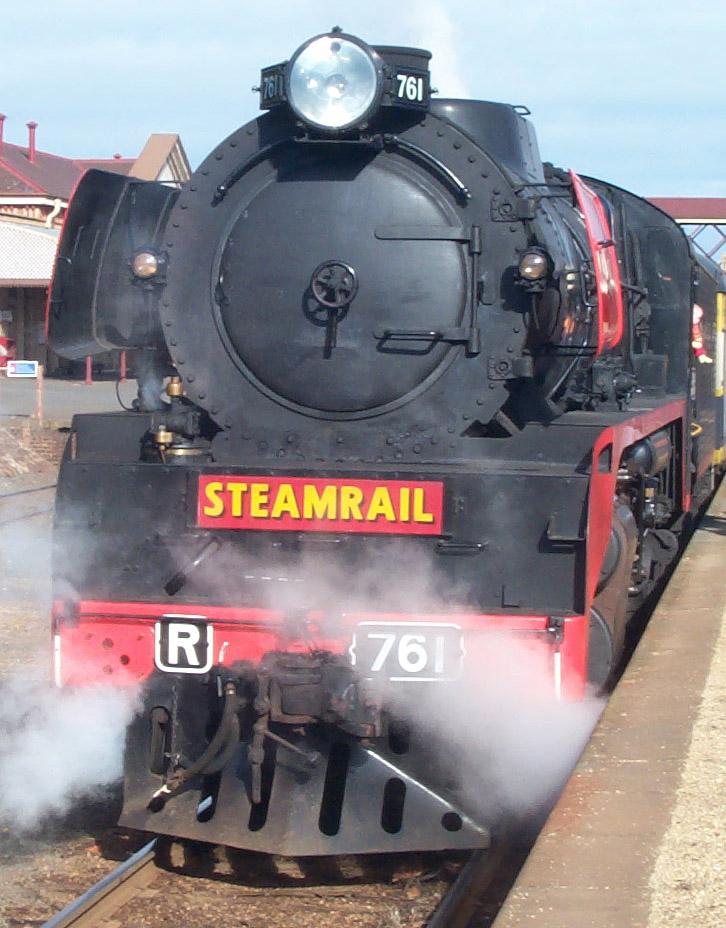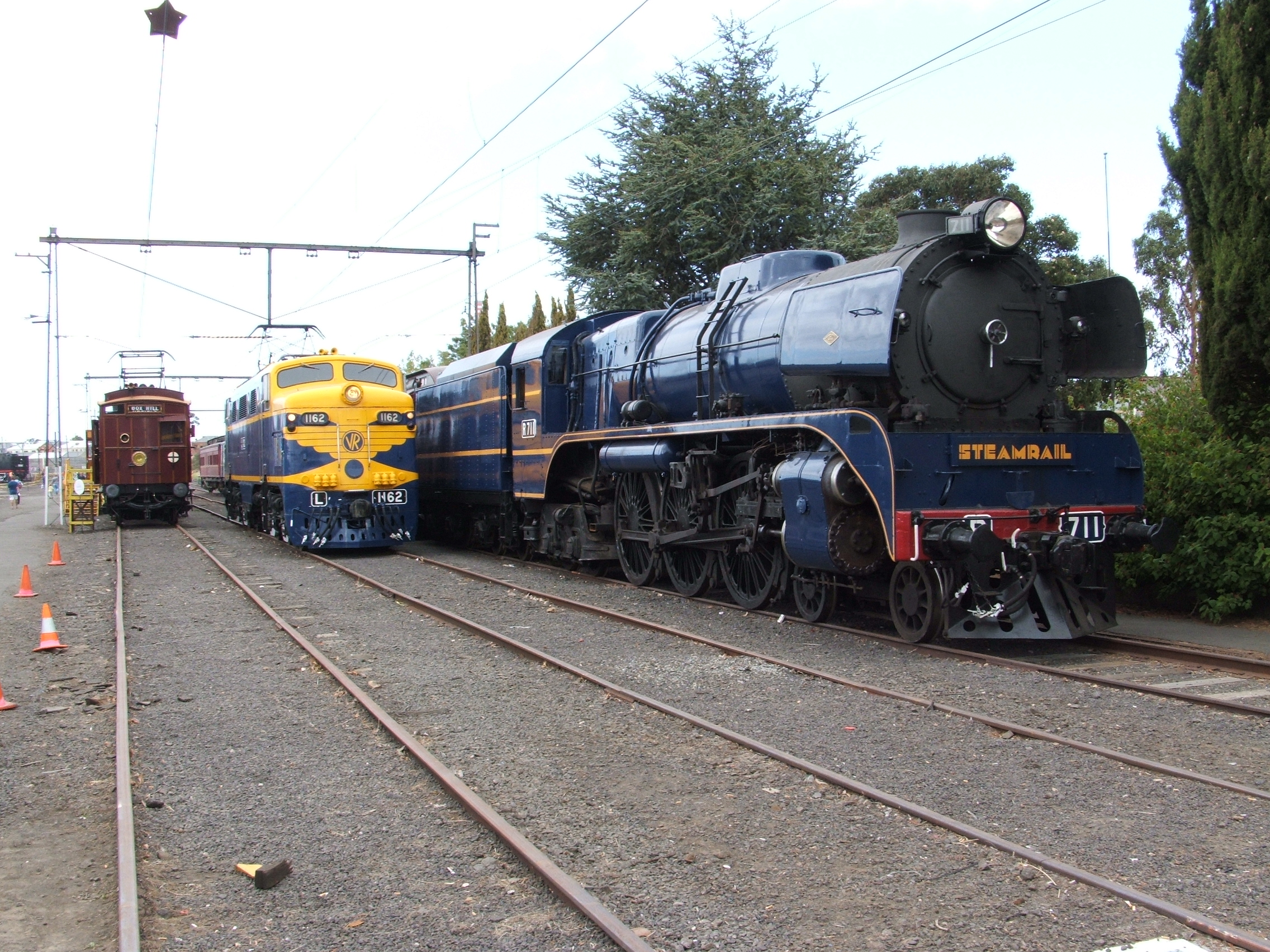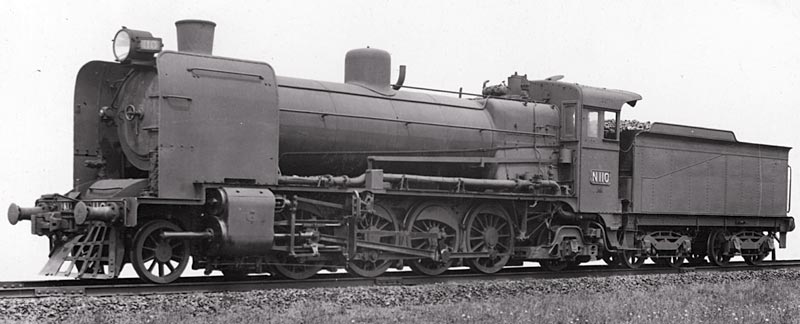|
Operation Phoenix (railway)
Operation Phoenix was a post-World War II rehabilitation program carried out by the Victorian Railways (VR) in Australia. The program commenced in 1950 and was originally planned to take 10 years and cost £80 million Australian pound, pounds. (VR publicity brochure) Operation Phoenix was named after the Phoenix (mythology), bird from Egyptian mythology. Background During the 1930s and 1940s, the Victorian Railways had deteriorated significantly due to years of economic depression, the demands of the war effort, and material shortages, leading to a general decline. It was anticipated that a railway the size of VR should have been constructing 25 locomotives, 30 to 40 carriages, and 500 wagons annually, in addition to relaying 60 miles of track. However, in reality, VR was only able to produce an average of 4 locomotives and 200 wagons per year, and any progress made was offset by long-overdue scrappings. When World War II erupted, the VR had little opportunity for reconstructio ... [...More Info...] [...Related Items...] OR: [Wikipedia] [Google] [Baidu] |
Victorian Railways F Class (diesel)
The F Class are a class of diesel locomotive shunters built by Dick Kerr Works for the Victorian Railways between 1951 and 1953. They are similar to the British Rail Class 11 and NS Class 600 shunting locomotives also built by English Electric during this period, but modified for use on the VR's 5 ft 3 in (1,600 mm) broad gauge (also known as Irish Gauge). History The F Class were ordered by the Victorian Railways as part of Operation Phoenix, an £80 million program to rebuild a network badly run down by years of Depression-era underinvestment and wartime overutilisation. The Victorian Railways purchased ten 0-6-0DE diesel shunting locomotives in 1951 from English Electric. The locomotives were built at EE's Preston workshops in the United Kingdom, and entered service from October 1951 onwards. The design is similar to that of the standard-gauge British Rail Class 11 and Nederlandse Spoorwegen 600 class locomotives, which were also being built by EE at this ... [...More Info...] [...Related Items...] OR: [Wikipedia] [Google] [Baidu] |
Victorian Railways J Class (1954)
The Victorian Railways J class is a branch line steam locomotive operated by the Victorian Railways (VR) between 1954 and 1972. A development of the successful Victorian Railways K class 2-8-0, it was the last new class of steam locomotive introduced on the VR. Introduced almost concurrently with the diesel-electric locomotives that ultimately superseded them, the locomotives were only in service for a relatively short time. History During the early 1950s, the Victorian Railways (VR) embarked on a massive upgrading of its ageing locomotive fleet as part of Operation Phoenix (railway), Operation Phoenix, an Australian pound, £80 million program to rebuild a network badly run down by years of underinvestment during the Great Depression, and the heavy workload imposed by World War II. Victoria's branch line railway network, laid with Rail tracks#Rail sizes, rail and featuring Grade (slope), gradients of up to 1 in 30 (3.33%), was still largely served by the D1, D2 and D3 varian ... [...More Info...] [...Related Items...] OR: [Wikipedia] [Google] [Baidu] |
Victorian Railways R Class
The R class is an express passenger steam locomotive that ran on Australia's Victorian Railways (VR) from 1951 to 1974. A much-needed replacement for the 1907-era Victorian Railways A2 class, A2 class 4-6-0, their development and construction was repeatedly delayed due to financial constraints caused by the Great Depression and later the manpower and materials shortages of World War II and the immediate postwar period. Orders eventually totalling 70 locomotives were placed with the North British Locomotive Company of Glasgow. Once initial teething problems were overcome, R class locomotives proved to be a success and their power and speed enabled faster timetabled services. However, they were almost immediately superseded by mainline diesel-electric locomotive, diesel-electric and electric locomotives on the Victorian Railways from 1952 onwards. With successive orders of diesel-electric locomotives through the 1950s and 1960s gradually displacing them, all but seven of the class ... [...More Info...] [...Related Items...] OR: [Wikipedia] [Google] [Baidu] |
Newport Workshops
The Newport Railway Workshops is a facility in the Melbourne suburb of Newport, Victoria, Newport, Australia, that builds, maintains and refurbishes Rolling stock, railway rollingstock. It is located between the Williamstown railway line, Williamstown and Werribee railway lines. History Plans for a workshop at Newport started in the 1860s, to replace the temporary Williamstown Workshops but nothing came of it. It was not until 1880 that work began, when the Victorian Railways purchased annexes used at the Melbourne International Exhibition (1880), 1880 Melbourne Exhibition and erected one of them at Newport, naming it the Newport Carriage Workshops when it began operation in 1882. Construction of the permanent workshops commenced in 1884, and was completed in 1889. Although the earlier carriage workshop closed at this time, it reopened in 1895 to manufacture signal equipment. The first Railroad car, carriages built by the workshops were completed in 1889, but early locomotives w ... [...More Info...] [...Related Items...] OR: [Wikipedia] [Google] [Baidu] |
Warragul Railway Station
Warragul railway station is a regional railway station on the Gippsland line, part of the Victorian railway network. It serves the town of Warragul, in Victoria, Australia. Warragul station is a ground level premium station, featuring one side platform. It opened on 1 March 1878, with the current station provided in 2015. Initially opened as Warrigal, the station was given its current name of Warragul on 1 May 1879. History The line between Pakenham and Warragul was duplicated in various stages between 1952 and 1956, and was electrified in 1954. Two years earlier, in 1952, the line to Yarragon was duplicated, and in 1955, electrification was extended to Moe. It was the junction station for the branch line to Neerim South and Noojee, which closed in 1958. Starting from 15 February 1987, and lasting until December 1998, the station was the terminus of a number of The Met/ PTC electric passenger services from Flinders Street. The line was de-electrified beyond Warrag ... [...More Info...] [...Related Items...] OR: [Wikipedia] [Google] [Baidu] |
Alamein Railway Line
The Alamein line is a commuter railway line on the Melbourne metropolitan railway network serving the city of Melbourne in Victoria, Australia. Operated by Metro Trains Melbourne, the line is coloured dark blue and is one of the four lines that constitute the Burnley group. It is the city's second shortest metropolitan railway line at . The line runs from Flinders Street station in central Melbourne to Alamein station in the east, serving 18 stations via Burnley, Camberwell, Riversdale, and Ashburton. The line operates for approximately 19 hours a day (from approximately 5:00 am to around 12:00 am) with all-night service on Fridays and Saturdays. During peak hours, headways of up to 15 minutes are operated with services every 10–30 minutes during off-peak hours. Trains on the Alamein line run with one or two three-car formations of X'Trapolis 100 trainsets. Sections of the Alamein line opened as early as 1898, with the line fully extended to Alamein by 1948. The Alame ... [...More Info...] [...Related Items...] OR: [Wikipedia] [Google] [Baidu] |
Richmond Station Melbourne1
Richmond most often refers to: * Richmond, British Columbia, a city in Canada * Richmond, California, a city in the United States * Richmond, London, a town in the London Borough of Richmond upon Thames, England * Richmond, North Yorkshire, a town in England * Richmond, Victoria, a suburb of Melbourne, Australia * Richmond, Virginia, the capital city of Virginia, United States Richmond may also refer to: People * Richmond (surname) * Earl of Richmond * Duke of Richmond * Richmond C. Beatty (1905–1961), American academic, biographer and critic * Richmond Avenal, character in British sitcom The IT Crowd Places Australia * Richmond, New South Wales ** RAAF Base Richmond ** Richmond Woodlands Important Bird Area * Richmond River, New South Wales **Division of Richmond (Federal Electoral district) **Electoral district of Richmond (New South Wales) * Richmond, Queensland * Shire of Richmond, Queensland * Richmond, South Australia * Richmond, Tasmania * Richmond, Victoria ** Elect ... [...More Info...] [...Related Items...] OR: [Wikipedia] [Google] [Baidu] |
Victorian Railways N Class
The N class is a branch line steam locomotive that ran on the Victorian Railways (VR) from 1925 to 1966. A development of the successful Victorian Railways K class, K class 2-8-0, it was the first VR locomotive class designed for possible Track gauge conversion, conversion from to . History In 1923, in response to the recommendations made by the 1921 List of Australian Royal Commissions, Royal Commission on the matter of uniform railway gauge, the VR announced a policy that all new locomotive designs were to be capable of gauge conversion, conversion from broad to standard gauge.Pearce et al., p. 12 The rationale was that the task of converting VR from broad to standard gauge at a future date would be far easier if existing locomotives and rolling stock could be easily modified for standard gauge operation, rather than requiring expensive re-engineering or replacement. The Victorian Railways K class, K class 2-8-0, built by the VR in 1922-23, was a success, but it was enginee ... [...More Info...] [...Related Items...] OR: [Wikipedia] [Google] [Baidu] |
Foreign Exchange Market
The foreign exchange market (forex, FX, or currency market) is a global decentralized or over-the-counter (OTC) market for the trading of currencies. This market determines foreign exchange rates for every currency. By trading volume, it is by far the largest market in the world, followed by the credit market. The main participants are the larger international banks. Financial centres function as anchors of trading between a range of multiple types of buyers and sellers around the clock, with the exception of weekends. As currencies are always traded in pairs, the market does not set a currency's absolute value, but rather determines its relative value by setting the market price of one currency if paid for with another. Example: 1 USD is worth 1.1 Euros or 1.2 Swiss Francs etc. The market works through financial institutions and operates on several levels. Behind the scenes, banks turn to a smaller number of financial firms known as "dealers", who are involve ... [...More Info...] [...Related Items...] OR: [Wikipedia] [Google] [Baidu] |
Electrical Substation
A substation is a part of an electrical generation, transmission, and distribution system. Substations transform voltage from high to low, or the reverse, or perform any of several other important functions. Between the generating station and the consumer, electric power may flow through several substations at different voltage levels. A substation may include transformers to change voltage levels between high transmission voltages and lower distribution voltages, or at the interconnection of two different transmission voltages. They are a common component of the infrastructure. There are 55,000 substations in the United States. Substations are also occasionally known in some countries as switchyards. Substations may be owned and operated by an electrical utility, or may be owned by a large industrial or commercial customer. Generally substations are unattended, relying on SCADA for remote supervision and control. The word ''substation'' comes from the days before the distri ... [...More Info...] [...Related Items...] OR: [Wikipedia] [Google] [Baidu] |






